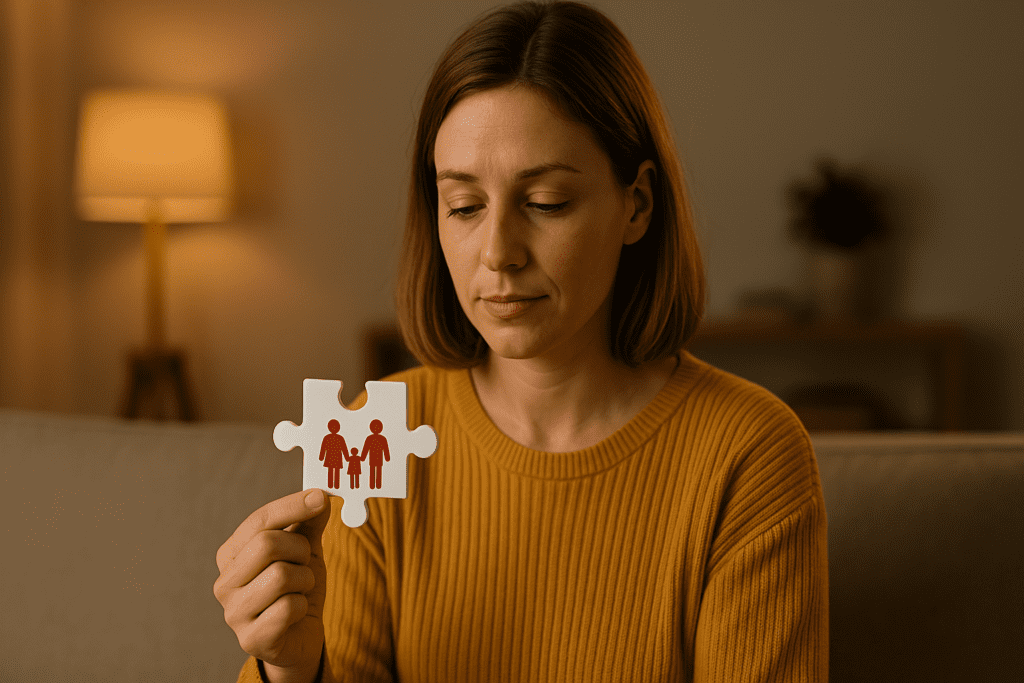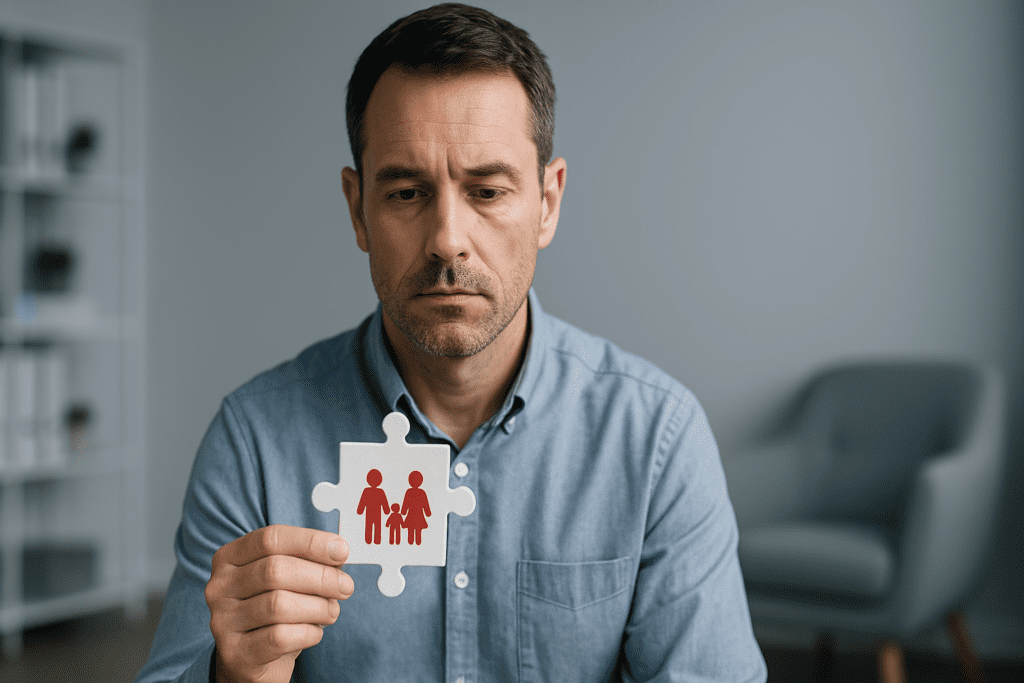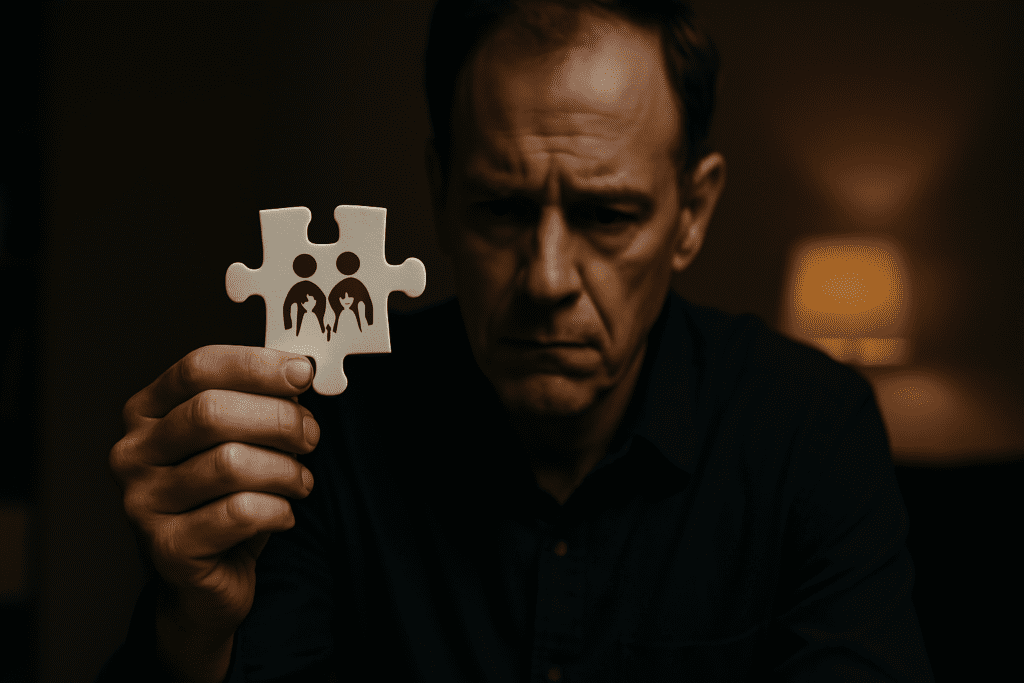Understanding the Foundations: What Is Cognitive Behavioral Therapy?
Cognitive Behavioral Therapy (CBT) is one of the most empirically supported and widely utilized psychological treatments available today. Originally developed to address individual concerns such as depression, anxiety, and phobias, its structured and evidence-based approach has proven remarkably adaptable to a broad spectrum of mental health issues—including those that arise within the family context. At its core, CBT helps individuals identify, challenge, and reframe maladaptive thought patterns that influence emotions and behaviors. This core mechanism also lends itself well to treating relational and systemic dynamics that contribute to family dysfunction.
You may also like: How Does CBT Work to Improve Relationships and Communication? Science-Backed Techniques for Getting Along with Others
Families are inherently complex systems, where each member’s behavior affects the entire group. When unresolved emotional patterns or dysfunctional thinking become entrenched, they can disrupt communication, trust, and emotional safety. Here is where the significance of cognitive behavioral therapy for families becomes clear: CBT doesn’t just focus on the individual in isolation. Instead, when adapted for family systems, it becomes a powerful tool for transforming the way families think, feel, and interact with one another.
Through a blend of cognitive restructuring, behavioral interventions, and collaborative problem-solving, CBT and healing family systems go hand in hand. By helping family members learn how their thoughts and behaviors contribute to distressing patterns, and by offering concrete tools for change, CBT fosters an environment of shared understanding and mutual growth. This makes it an essential modality for both clinical treatment and long-term emotional resilience within family life.
The Emotional Landscape of the Family System: Why Dysfunction Persists
Every family develops its own ecosystem of beliefs, behaviors, and emotional responses. Some families are marked by overt conflict—arguments, emotional outbursts, or even estrangement—while others may suffer from more covert forms of dysfunction such as emotional avoidance, passive-aggressive communication, or enmeshment. Often, these issues are not the result of malice or neglect, but rather learned responses that have never been examined or interrupted. In such cases, cog behavioral therapy family interventions can serve as a crucial reset button.
When stressors like financial insecurity, chronic illness, or trauma disrupt the family’s equilibrium, underlying vulnerabilities tend to surface. Members might fall into roles—such as the fixer, the scapegoat, or the avoider—that reinforce imbalance rather than resolve it. CBT is especially useful in these moments because it doesn’t just address surface-level behavior; it delves into the thought patterns and emotional schemas that keep dysfunction alive.
One common example is the perpetuation of negative attributional styles—where family members consistently assume ill intent or blame in the actions of others. In CBT, these are called “cognitive distortions,” and they are addressed through structured techniques like thought records, Socratic questioning, and behavioral experiments. When family members begin to see how their interpretations may be fueling conflict, they are better equipped to shift their perspectives. This is part of the deeper significance of cognitive behavioral therapy for families: it encourages each member to take responsibility for their internal narrative while building compassion for others.
From Individuals to Systems: Adapting CBT for the Family Context
Traditional CBT has a strong individual orientation, but when applied within a family setting, it takes on a more systemic approach. Therapists trained in CBT for families recognize that a change in one person’s behavior can trigger ripple effects across the entire unit. Rather than attempting to change each individual in isolation, cog behavioral therapy family strategies are designed to shift the relational dynamics that perpetuate distress.
For instance, if a teenager is struggling with anxiety and frequently avoids school, it’s not enough to just help the teen manage their anxious thoughts. CBT in a family context would also examine how the parents respond to avoidance—whether they accommodate it, punish it, or ignore it—and how those responses either reinforce or alleviate the problem. By addressing these interactional patterns, CBT helps the entire system become more flexible and supportive.
Moreover, CBT emphasizes the role of behavioral activation and exposure, which can be applied to family routines. Families may be encouraged to engage in shared problem-solving activities, restructure their schedules to reduce chaos, or practice new communication skills during therapy and at home. These structured, goal-oriented interventions give families a clear roadmap for healing while still honoring the complexities of their emotional lives. It is this marriage of structure and empathy that underscores the significance of cognitive behavioral therapy for families, especially when relational wounds run deep.
Communication as a Therapeutic Target: Rewiring the Family Dialogue
One of the most immediate benefits of CBT in family systems is the transformation of communication patterns. Dysfunctional communication—whether it’s marked by hostility, withdrawal, or chronic misinterpretation—often lies at the root of family conflict. CBT provides a rich set of tools for improving communication, grounded in both cognitive and behavioral science.
Central to this is the concept of assertiveness training. Many family members either struggle to express their needs clearly or do so in a way that is aggressive or accusatory. CBT teaches individuals to recognize unhelpful thought patterns—such as “They never listen to me” or “If I speak up, I’ll be rejected”—and replace them with more balanced, reality-based thinking. This cognitive shift allows for more respectful and effective dialogue.
In addition to modifying thoughts, CBT encourages behavioral rehearsal. Families might role-play difficult conversations in session or practice using “I-statements” instead of blame-based language. These exercises are not merely theoretical; they help rewire neural pathways associated with conflict and threat, enabling calmer, more constructive exchanges. The value of cog behavioral therapy family interventions becomes especially clear in these moments, as new habits begin to replace old, damaging patterns.
As communication improves, so too does emotional attunement. Family members start to feel seen and heard in ways they may not have experienced before. This lays the groundwork for deeper healing, allowing even long-standing wounds to begin the process of repair. CBT and healing family systems thus become intertwined, as changes in communication pave the way for emotional reconnection.

Intergenerational Patterns: Breaking the Cycle with CBT
Many family struggles are rooted not just in present-day issues, but in long-standing patterns passed down from previous generations. These intergenerational cycles might include rigid parenting styles, emotional suppression, or patterns of addiction and codependency. Left unexamined, such patterns can quietly dictate the emotional tone and behavior of future generations. Cognitive Behavioral Therapy offers a structured yet compassionate framework for interrupting these legacies.
When CBT is applied to the family system, it enables members to map out their inherited beliefs and behavioral responses. For example, a parent who was raised in an environment where emotions were dismissed may unconsciously teach their own children to suppress their feelings. CBT helps that parent identify these beliefs—such as “Showing emotion is a sign of weakness”—and begin to question their validity. This opens the door to new ways of relating that are healthier and more emotionally intelligent.
Moreover, CBT encourages families to collaboratively redefine their values and goals. What kind of family culture do they want to create? How can they respond differently than past generations did? These are not abstract questions—they are embedded into the therapeutic process, allowing families to co-create a new narrative. In this sense, the significance of cognitive behavioral therapy for families is profound. It gives families not only the tools to heal from past wounds but also the agency to shape a different future.
Breaking these cycles requires patience, courage, and often, a fair amount of grief work. CBT doesn’t shy away from the emotional toll of change, but it also doesn’t allow families to stay stuck. Through incremental steps, reinforced by behavioral changes and cognitive shifts, families begin to experience themselves not as victims of their past, but as active participants in their own healing.
CBT for Specific Family Challenges: From Conflict to Connection
While the principles of CBT can be applied broadly, its effectiveness becomes especially apparent when addressing specific family challenges. Whether a family is coping with a child’s behavioral disorder, navigating a divorce, or recovering from trauma, CBT offers targeted strategies for building resilience and restoring connection.
In families with children who have attention-deficit/hyperactivity disorder (ADHD), for example, CBT can help parents shift from punitive responses to more constructive behavioral plans. They learn to identify their own frustration triggers, challenge thoughts like “My child is just being difficult,” and adopt more effective reinforcement strategies. Similarly, in families dealing with divorce, CBT can help children process confusing emotions while equipping parents with tools to co-parent respectfully and consistently.
Another critical application of CBT and healing family systems is in the context of trauma. Families that have experienced collective trauma—whether from abuse, displacement, or loss—often operate in survival mode. Hypervigilance, emotional numbness, and mistrust become the norm. CBT helps families understand the impact of trauma on cognition and behavior, and provides them with a roadmap for recovery. This might include practicing grounding techniques, identifying trauma-related thoughts, and gradually re-engaging in shared activities that promote connection and safety.
These applications underscore the flexibility and relevance of cog behavioral therapy family interventions across a wide range of scenarios. What remains consistent across all these applications is CBT’s commitment to evidence-based, client-centered healing. Rather than pathologizing individual members, CBT views the family as a dynamic and adaptive system—capable of growth, change, and transformation.
Measuring Progress: How Families Know When Healing Is Taking Place
One of the strengths of CBT lies in its emphasis on measurable outcomes. Unlike some therapeutic approaches that rely solely on emotional insight, CBT incorporates clear markers of progress—such as reduced conflict frequency, improved emotional regulation, and enhanced communication skills. This structure offers families a tangible sense of momentum, which can be incredibly motivating during difficult times.
Families often begin to notice subtle but powerful shifts. Arguments become less frequent and less intense. Members feel more emotionally regulated and less triggered by each other’s behavior. There is a growing sense of safety and emotional availability. These outcomes are not just anecdotal—they are reinforced through tools like mood charts, communication logs, and behavioral tracking forms that are regularly reviewed in therapy.
Another sign of healing is the development of emotional resilience. Family members begin to demonstrate the ability to bounce back from stressors more effectively. They are able to repair ruptures in the relationship more quickly, and they exhibit a greater tolerance for ambiguity and difference. This is perhaps one of the clearest indicators of the significance of cognitive behavioral therapy for families: not just the reduction of symptoms, but the cultivation of strengths.
Moreover, the skills learned in CBT often extend beyond the therapy room. Families report applying what they’ve learned in other contexts—at work, at school, and in friendships. This generalization of skills is a hallmark of CBT’s long-term effectiveness. It doesn’t just aim to fix problems—it aims to build lifelong coping strategies that serve individuals and families across the lifespan.
Why the Future of Family Therapy Needs CBT
As mental health continues to evolve, the integration of evidence-based practices into family therapy will become increasingly vital. The growing body of research supporting CBT’s effectiveness across individual, relational, and systemic levels makes it a natural fit for modern family interventions. With its blend of structure, empathy, and accountability, CBT provides the scaffolding families need to face contemporary challenges such as digital overload, economic uncertainty, and the mental health crises that affect youth and adults alike.
Beyond its clinical strengths, CBT reflects a broader cultural shift toward intentionality, mindfulness, and agency. It encourages individuals and families to pause, examine their inner world, and take deliberate steps toward change. In a society that often emphasizes quick fixes or external solutions, this inward, reflective approach is both radical and deeply necessary.
As families become more diverse in structure, background, and experience, CBT’s adaptability ensures that it remains relevant. Whether applied in traditional two-parent households, single-parent families, blended families, or chosen families, CBT respects the uniqueness of each unit while offering universally applicable tools. The significance of cognitive behavioral therapy for families is not confined to any one model—it lies in its capacity to honor difference while promoting shared humanity.

Frequently Asked Questions: Cognitive Behavioral Therapy for Families
1. How can CBT support families experiencing caregiver burnout?
CBT offers an essential framework for families facing caregiver burnout, particularly when one member is providing long-term care to an aging parent or a chronically ill child. While much attention is often placed on the patient, caregivers frequently experience emotional exhaustion, resentment, and feelings of helplessness. The significance of cognitive behavioral therapy for families in this context lies in its ability to reshape how caregivers perceive their roles and manage their emotional responses. For example, CBT can help challenge guilt-driven thoughts like “I’m not doing enough” and replace them with more compassionate internal dialogues. In turn, this reduces psychological strain and encourages shared caregiving responsibilities—strengthening family cohesion and reinforcing the role of CBT and healing family systems even in high-stress caregiving environments.
2. Can CBT help families manage the emotional aftermath of substance use recovery?
Absolutely. Substance use often fractures trust within a family, and rebuilding that trust post-recovery requires more than abstinence—it demands ongoing emotional repair. Cog behavioral therapy family strategies are particularly effective here because they equip members with tools to rebuild trust without falling into old cycles of blame or enabling. CBT can help both the recovering individual and their loved ones identify high-risk thoughts, understand relapse triggers, and set realistic expectations for recovery. This shared process creates a transparent emotional climate, fostering accountability and compassion. The significance of cognitive behavioral therapy for families recovering from addiction lies in its ability to address the family as a dynamic unit rather than isolating the “identified patient.”
3. How does CBT address differences in cultural or generational expectations within families?
Conflicts arising from cultural or generational differences—such as values around discipline, emotional expression, or independence—are increasingly common in multicultural households. CBT and healing family systems are compatible even when perspectives within the family vary widely. One of CBT’s strengths is its focus on making beliefs and assumptions explicit, which is crucial when bridging cultural gaps. For instance, a grandparent raised in a collectivist culture may believe obedience equates to love, while a teenager raised in an individualist context might prioritize autonomy. Cog behavioral therapy family interventions make space for these belief systems to be examined respectfully and translated into mutual understanding. This approach doesn’t erase cultural identity—it strengthens communication and emotional literacy across generational lines.
4. Can CBT be adapted for families with a member on the autism spectrum?
Yes, and its adaptability is one of its greatest assets. When one or more family members are on the autism spectrum, CBT can be tailored to accommodate differences in communication, emotional processing, and sensory sensitivities. For example, CBT techniques may rely more on visual aids, structured routines, and concrete language. The significance of cognitive behavioral therapy for families in this setting is that it can teach neurotypical members to interpret and respect different behavioral cues while also helping the neurodivergent individual develop cognitive strategies that feel accessible and empowering. This dual focus encourages empathy and cooperation, supporting CBT and healing family systems through personalized, inclusive interventions that respect neurodiversity.
5. How does CBT work in families where emotional expression has historically been suppressed?
In many families, especially those shaped by trauma or rigid cultural norms, emotional suppression becomes a survival mechanism passed down through generations. Cog behavioral therapy family models help dismantle this pattern by fostering safe, structured environments for expression. CBT doesn’t just encourage open communication—it teaches members how to name their emotions accurately, challenge internal beliefs that equate vulnerability with weakness, and practice emotional regulation. This process often begins with recognizing “emotional schemas” and learning that discomfort is not danger. The significance of cognitive behavioral therapy for families in these cases lies in normalizing emotional openness and transforming silence into shared language, creating a foundation for long-term relational healing.
6. What role does CBT play in co-parenting dynamics after a divorce?
CBT is an effective framework for improving co-parenting relationships, particularly when communication is strained or adversarial. Post-divorce families often fall into patterns of reactive thinking—such as assuming the other parent is acting maliciously—which only exacerbates conflict. CBT helps co-parents identify these distorted thought patterns and reframe them into neutral or constructive interpretations. This mindset shift promotes clearer communication and collaborative decision-making. By focusing on child-centered goals and emotional regulation, CBT and healing family systems evolve beyond romantic relationships and become about preserving emotional security for the children involved. The shared vocabulary CBT fosters can reduce legal disputes, improve consistency, and shield children from loyalty conflicts.
7. Can CBT support blended families experiencing role confusion or competition?
Yes, and this is a key area where cog behavioral therapy family interventions truly excel. Blended families often encounter complex dynamics, such as competition between biological and step-siblings, role confusion between stepparents and biological parents, and differing discipline philosophies. CBT helps families unpack assumptions—like “she’s not my real parent, so I don’t have to listen to her”—and replace them with collaborative problem-solving models. The therapist may guide families to co-create household norms and shared values, reducing ambiguity and resentment. The significance of cognitive behavioral therapy for families in blended structures lies in promoting psychological safety while fostering new, flexible identities that support integration rather than division.
8. How does CBT empower children and adolescents within family systems?
Children and adolescents often lack the language or self-awareness to express emotional needs, especially in chaotic family environments. CBT empowers them by introducing age-appropriate cognitive tools that promote self-regulation, problem-solving, and emotional resilience. For example, younger children may use “thought-feeling-behavior” charts, while teens can learn to identify catastrophic thinking or black-and-white beliefs about family loyalty. At the same time, parents are taught to validate their children’s experiences without immediately problem-solving or dismissing their emotions. This bilateral learning strengthens the family’s emotional scaffolding and reflects the heart of CBT and healing family systems—empowering each member to take ownership of their internal world while contributing to a more empathetic whole.
9. What makes CBT uniquely suited for addressing chronic family conflict compared to other therapies?
While many therapeutic modalities explore emotional insight or family history, CBT distinguishes itself by offering structured, solution-focused strategies that lead to observable change. Chronic family conflict often thrives on entrenched communication patterns and misinterpreted intentions, which CBT is well-designed to unravel. Techniques such as thought monitoring, behavioral rehearsal, and collaborative reframing allow family members to build new interactional scripts grounded in accountability and empathy. Unlike less directive approaches, CBT provides tangible tools that families can continue using long after therapy ends. The cog behavioral therapy family approach emphasizes both the “why” and the “how” of conflict resolution, making it particularly effective in breaking long-standing cycles of reactivity.
10. What are emerging innovations in CBT that could further enhance its impact on families?
Emerging trends in CBT for families include the integration of digital platforms, such as mobile apps and teletherapy tools, which make therapeutic practices more accessible and continuous. Another innovation is the blending of mindfulness-based CBT with traditional techniques, allowing families to incorporate somatic awareness and emotional regulation exercises into daily life. Therapists are also increasingly using real-time data from wearable devices to monitor stress responses and adjust interventions accordingly. These advancements support the ongoing evolution of CBT and healing family systems in a way that is both high-tech and human-centered. The significance of cognitive behavioral therapy for families will only grow as it continues to adapt to modern challenges while maintaining its evidence-based core.

A Pathway to Lasting Change: Embracing the Power of CBT in Family Systems
In the intricate dance of family dynamics, healing is rarely linear—but it is always possible. Cognitive Behavioral Therapy offers a powerful, scientifically grounded pathway for families seeking not just to survive, but to thrive. By addressing the cognitive and behavioral patterns that fuel conflict and disconnection, CBT and healing family systems become intertwined in a process of mutual transformation.
The significance of cognitive behavioral therapy for families lies in its ability to translate abstract emotional challenges into tangible steps for growth. Whether the issue is chronic miscommunication, inherited trauma, or a specific diagnosis, CBT provides families with both a map and the means to navigate their way toward healthier relationships.
In a world where emotional resilience and relational intelligence are more important than ever, CBT stands out as a beacon of possibility. It empowers families to examine their stories, rewrite their scripts, and choose new ways of being—together. And in doing so, cog behavioral therapy family approaches not only change lives within the therapy room, but ripple outward into communities, cultures, and generations yet to come.
family therapy techniques, emotional regulation in families, CBT for parenting challenges, intergenerational trauma healing, improving family communication, coping with family stress, therapy for blended families, rebuilding trust in relationships, cognitive restructuring in therapy, mental health for caregivers, trauma-informed family therapy, structured family interventions, parenting support therapy, psychological resilience in families, behavioral health strategies, emotional development in children, therapy for co-parenting, managing conflict in families, evidence-based family therapy, emotional intelligence in relationships
Further Reading:
Overview – Cognitive behavioural therapy (CBT)
Benefits of Family CBT | The How, Why and Where from ASIC
The key principles of cognitive behavioural therapy
Disclaimer
The information contained in this article is provided for general informational purposes only and is not intended to serve as medical, legal, or professional advice. While Health11News strives to present accurate, up-to-date, and reliable content, no warranty or guarantee, expressed or implied, is made regarding the completeness, accuracy, or adequacy of the information provided. Readers are strongly advised to seek the guidance of a qualified healthcare provider or other relevant professionals before acting on any information contained in this article. Health11News, its authors, editors, and contributors expressly disclaim any liability for any damages, losses, or consequences arising directly or indirectly from the use, interpretation, or reliance on any information presented herein. The views and opinions expressed in this article are those of the author(s) and do not necessarily reflect the official policies or positions of Health11News.


